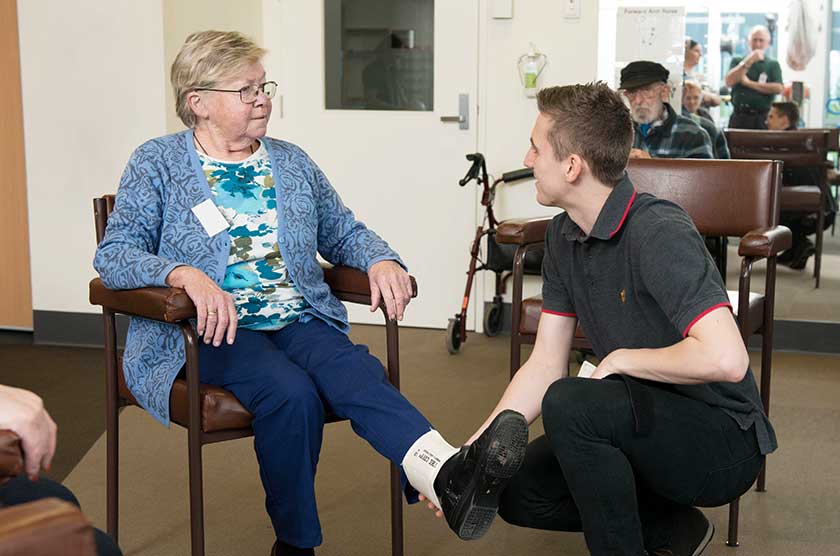The ankle joint
Your ankle is the joint found between the end of the lower leg bones – your tibia and fibula and your foot (the talus).
It works as a hinge, giving your foot the ability to flex upwards and downwards, and a small amount of rotation.
Ligaments surround the joint help to keep the bones in place and maintain your balance.
How can an ankle injury occur?
As your ankle is only designed for a limited range of movement, the most common ankle injuries (sprains) are usually caused by a sudden change in direction or sudden burst of movement. Sprains can also occur if you trip, or fall awkwardly.
Ankle sprains are particularly common in people who play sports such as football, soccer, basketball or netball.
A fracture (break) can occur in one or more bones of the ankle joint after a fall or when the joint sustains a sudden impact. An ankle break can be extremely painful and limits your amount of movement.
How do I know if I have an ankle injury?
Depending on the type and severity of the injury, you may experience:
- moderate to severe pain
- swelling and/or stiffness
- inability to bear weight on the affected ankle
- joint instability
- loss of balance.
Types of ankle injuries
An ankle injury is usually one of three things, a sprain, a fracture or a dislocation, and each can vary in severity.
Sprains
A sprain happens when the fibres surrounding the ankle joint (ligaments) are over stretched or become separated from the bone.
Usually, a sprain is caused by an excessive amount of pressure to the joint, which causes it to bend into a position it is not meant to go into.
There are two main types of ankle sprains, eversion and inversion.
- Eversion (where the foot twists outwards), causes damage to the ligaments on the inner side of the ankle.
- Inversion (where the foot twists inwards), causes damage to the ligaments on the outer side.
When ligaments are damaged, the ankle joint becomes weak and unstable. This can result in further injury such as fracture or dislocation.
Fractures
A fracture is when one or more of the bones that make up the ankle joint break.
If only one bone is broken, it is possible to mistake it for an ankle sprain as you may still be able to walk and bear weight.
However, with a severe fracture where multiple bones are broken, you may require surgery and be unable to use your limb.
Dislocation
A dislocation occurs when the ankle joint cannot be supported correctly, such as after a sprain. With minimal or no support, one or more of the bones that make up the joint pop out of place.
This can happen if the ankle is put under excessive pressure or is forced into an awkward position.
When the ankle joint dislocates it is also possible to damage its surrounding ligaments.
Urgent medical attention is needed if you dislocate your ankle.
What are the risk factors?
There are many risk factors that can make you more prone to getting an ankle injury. Such as:
- a previous injury to your ankle
- poor or no rehabilitation of a previous ankle injury
- your balance being poor
- a lack of or too much flexibility in your ankle
- wearing inappropriate shoes
- walking on an uneven surface
- not warming up properly before exercise or playing sport
- playing a high-impact sport such as netball, basketball or football
- over using an ankle that is showing fatigue or experiencing pain.










